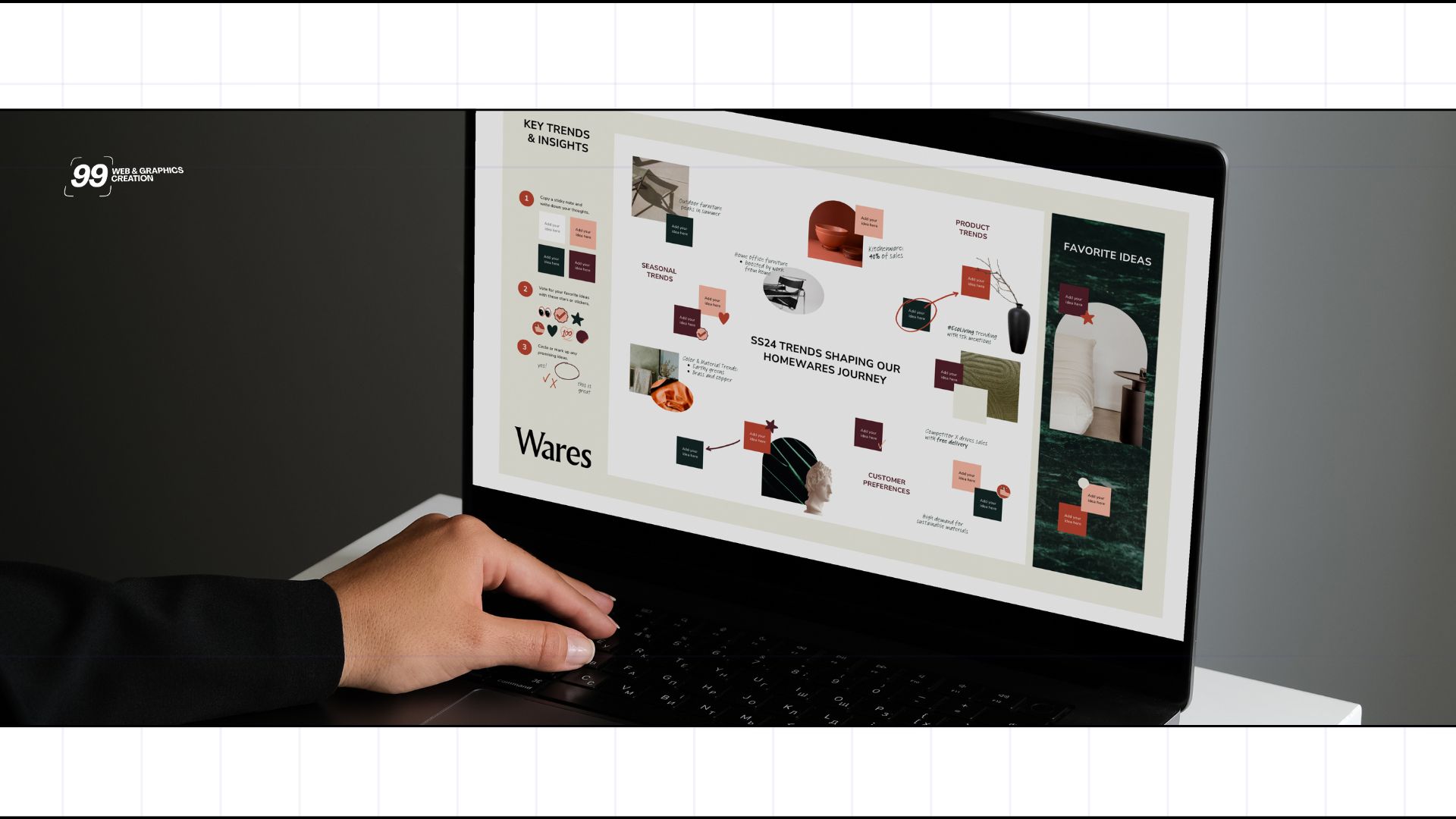Starting a new business is an exhilarating journey filled with passion and potential. However, amidst the excitement of developing your product or service, there’s a crucial element that can make or break your venture’s success: branding. Without a solid brand foundation, even the most innovative ideas can struggle to gain traction and resonate with the intended audience.
Branding is far more than just a logo or a catchy slogan. It’s about defining the very identity of your business, imbuing it with characteristics that shape how people perceive you. It’s your business’s personality, its voice, and most importantly, its unique differentiator in a crowded marketplace. Your brand is what makes you stand out from the competition, the intangible quality that draws customers in and fosters loyalty.
To help you navigate the essential steps of building an impactful brand from the ground up, here is a 10-point branding essentials for startups that you simply cannot afford to skip. Following this guide will equip you to build a memorable brand that connects with your audience and sets you on the path to sustainable growth.
1. Define Your Brand Core: Mission, Vision, and Value
The very first step in building a strong brand is to understand its core. This involves clearly defining your mission, vision, and core values. Ask yourself:
- What problem are you setting out to solve?
- Who are you aiming to serve with your product or service?
- What is the fundamental reason your business exists?
Identifying these foundational elements is critical because they form the bedrock of your brand message. They will influence every subsequent decision, from your marketing strategies to your visual identity. Understanding your ‘why’ allows you to clearly articulate your purpose and connect with the audience who align with your values.
2. Understand Your Target Audience
Once you’ve defined your brand’s core, the next crucial step is to deeply understand the people you intend to serve. Create detailed audience personas that go beyond basic demographics. Delve into their interests, needs, challenges, and aspirations.
Consider what appeals to them and how your brand can authentically connect with their world. This understanding should also extend to analyzing your competitors and identifying what resonates with your shared audience. Why does this matter? Because a brand that genuinely connects with its ideal customer base fosters increased engagement, builds trust, and cultivates lasting loyalty. People are drawn to brands that understand them and make them feel valued.
3. Choose Your Name and Tagline Wisely
Your brand name and tagline are often the very first introduction people have to your business. Therefore, selecting them requires careful consideration. Aim for a name that is not only unique and memorable but also relevant to your business offering. Think of iconic brands like Coca-Cola or Nike, their names are simple, distinct, and easily recalled.
Your tagline should be a concise phrase that encapsulates your brand’s essence and value proposition. Together, your name and tagline create an immediate impression and play a significant role in how easily people remember and identify with your brand.
4. Develop Your Visual Identity
A cohesive and appealing visual identity is paramount for brand recognition and professionalism. This is where the aesthetics of your brand come to life. It’s highly recommended to work with graphic designers or web developers to create these elements. Key components of your visual identity include:
- Logo Design: Your primary logo, variations for different applications, and an icon.
- Brand Colors: A carefully selected palette that aligns with your brand’s personality and the psychology of color. Consider what emotions and associations your colors evoke. As seen with many tech companies using blue to represent trust, color choices are strategic.
- Typography: The fonts you choose for your branding materials. Consistency in using one or two primary fonts helps establish a recognizable look.
- Imagery Style: The type of photos, illustrations, or graphics you will use consistently.
- Design Elements: Any recurring patterns, shapes, or graphical elements that contribute to your brand’s unique look.
A consistent visual identity across all platforms builds recognition and conveys a sense of professionalism and reliability. Avoid haphazardly changing your visual elements, as this can confuse your audience and dilute your brand’s impact.
5. Develop a Brand Voice and Messaging Guide
Your brand’s voice is its personality in written and spoken communication. Decide on the tone that best represents your brand and resonates with your target audience. Should it be friendly and approachable, formal and authoritative, bold and energetic, or empathetic and caring? Your brand’s core values and mission should guide this decision.
Furthermore, create key messaging frameworks. This includes crafting a compelling mission statement, a concise elevator pitch, and clear, engaging product descriptions. Defining these frameworks ensures that your brand’s core message is communicated consistently and effectively across all touchpoints. A well-defined brand voice clarifies your personality and helps in communicating your values clearly to your audience.
6. Create a Professional Website
In today’s digital age, your website serves as your brand’s online home. Investing in a responsive, user-friendly website design is non-negotiable. Your website should be easy to navigate and include essential pages such as a homepage, an about page telling your story, and a services or products page detailing your offerings.
For those who may not have the in-house expertise, consider reaching out to professional web design services. Your website is often where potential customers will go to learn more about you and ideally, convert into paying customers. It’s a crucial tool for building credibility and showcasing your brand.
7. Set Up Branded Social Media Channels
Social media platforms offer a powerful avenue to expand your brand’s reach and engage with your target audience. Choose the platforms where your ideal customers spend their time. If your brand relies heavily on visual content and videos, platforms like Instagram, TikTok, and YouTube are excellent choices. If your focus is on professional networking and descriptive content, LinkedIn and Facebook might be more suitable.
Once you’ve selected your platforms, set up branded profiles and create a content calendar to ensure consistent and strategic posting, especially around your launch. Maintaining an active and engaging social media presence reinforces your brand identity and allows for direct interaction with your audience.
8. Create Essential Brand Collateral
Brand collateral refers to the collection of media used to promote your brand and support sales. Creating essential brand collateral ensures that every interaction a potential customer has with your business reinforces your brand identity. This includes items such as:
- Business cards
- Email signatures
- Letterheads
- Pitch decks
- Product packaging and labels (if applicable)
Each piece of collateral is an opportunity to leave a strong, positive impression and maintain brand consistency. Professional and well-designed collateral speaks volumes about your attention to detail and commitment to quality.
9. Create a Brand Launch Strategy
A successful brand launch requires careful planning and execution. Develop a strategy for introducing your brand to the world. This could involve a social media campaign showcasing the behind-the-scenes journey of your brand’s creation, email marketing to your network, or even hosting giveaways to generate excitement and early traction.
Planning a strategic launch increases visibility, creates buzz, and allows you to gather initial feedback from your audience. Be open to this feedback and willing to make improvements based on it.
10. Document Everything in a Brand Style Guide
Finally, and perhaps most importantly for long-term consistency, document all your branding rules and guidelines in a comprehensive brand style guide. This single document should include details on logo usage (correct and incorrect applications), your chosen fonts and typography rules, your official color palette (with specific color codes), and a description of your brand voice and tone.
This guide serves as a crucial reference point for everyone on your team, ensuring that your brand is represented consistently across all internal and external communications. Consistency in your visual and verbal identity builds trust and reinforces your brand’s professionalism over time.
Branding is not a one-time task; it’s an ongoing process that requires continuous attention, research, and strategizing. It’s a long-term investment in how your business is perceived by the world. By diligently following this checklist, you will launch your startup with clarity, confidence, and a compelling brand presence that attracts the right audience and sets the stage for lasting success. Review your brand against this checklist regularly and commit to putting these essentials into practice.




